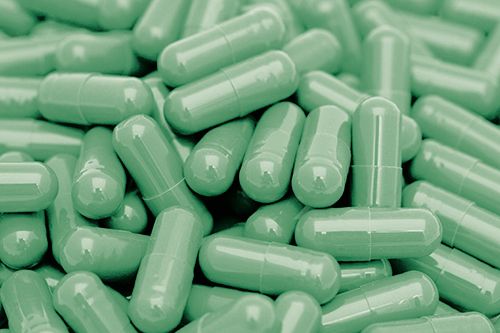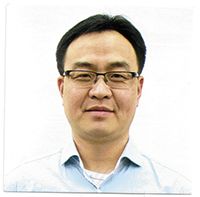Going Green in Pharmaceutical Analysis
LCGC Europe
LCGC Europe spoke to Yong Liu and Adam Socia from MSD about the cost-saving benefits of implementing green chromatography in the pharmaceutical sector, the importance of analytical method volume intensity (AMVI), and effective practices to reduce solvent consumption and replace harmful solvents, including supercritical fluid chromatography (SFC), fast chromatography, and “cocktail chromatography”.
Photo Credit: Abel Tumik/Shutterstock.com

LCGC Europe spoke to Yong Liu and Adam Socia from MSD about the cost-saving benefits of implementing green chromatography in the pharmaceutical sector, the importance of analytical method volume intensity (AMVI), and effective practices to reduce solvent consumption and replace harmful solvents, including supercritical fluid chromatography (SFC), fast chromatography, and “cocktail chromatography”.
Q. What is the definition of green chromatography?
Yong Liu: Green chromatography is an important part of green analytical chemistry and originates from the 12 green chemistry principles developed to reduce the environmental impact of chemical synthesis and analysis (1). Green chromatography incorporates practices to reduce the amount of solvent consumption and waste generation mainly through separation and sample preparation.
Q. What green approaches are being used to reduce the amount of solvents being used in liquid chromatography (LC)?
YL: From our perspective, the first step is to provide a metric tool for measurement of the “greenness” of a liquid chromatographic method. Hartman, Helmy, and coauthors developed analytical method volume intensity (AMVI), a simple metric that offers quick measurement of total solvent consumption for a high performance liquid chromatography (HPLC) method (2). AMVI enhances the awareness of green chromatography and, more importantly, makes this concept an integral part of method development for bench analytical scientists.
From a technical point of view, the review article by Welch, Wu, and coauthors offered an excellent summary of major green approaches in chromatography (3). The first is solvent reduction through fast chromatography by using conventional HPLC with elevated pressures, ultrahigh-performance liquid chromatography (UHPLC) or conventional HPLC systems with minor modifications, such as smaller diameter columns for greener separation or new column technologies, such as fused-core particle columns. The second approach is to use microflow and capillary HPLC. The third strategy is solvent replacement, which is achieved by using ethanol to replace acetonitrile, superâheated water chromatography, and carbon dioxide-based chromatography. Recently, a work by Welch, Regalado, and coauthors demonstrated that HPLC and LC–mass spectrometry (MS) experiments can be performed using distilled alcohol spirits, such as cachaça, rum, vodka, and aguardiente, as well as other common household items, including vinegar and ammonia, as mobile phases and additives (4). The former has been nicknamed “cocktail chromatography”. This methodology provides a low cost and environmentally sustainable alternative in LC that does not depend on the use of hazardous organic solvents (such as acetonitrile). Supercritical fluid chromatography (SFC) uses pressurized carbon dioxide in the subcritical or supercritical state as a chromatographic mobile phase and has been adopted for both preparative separation and analytical purposes.
Q. You recently published an article on a greener chromatography method for dissolution testing on solid pharmaceutical formulations. What is novel about your approach and what benefits does it offer the analyst?
Adam Socia: Green chromatography has been practiced to support small molecule drug substance synthesis and release in the pharmaceutical industry for more than 10 years. However, the application of green chromatography in formulation development for drug products is not so common. Our work represents one of the first applications of green chromatography in drug product development (5). We provided an improved chromatographic protocol combining the utilization of smaller internal diameter (i.d.) columns, superficially porous column technology, injection cycle time for gradient re-equilibration, system dwell volume understanding, and basic separation concepts for optimization for a greener, faster, and robust way to conduct dissolution testing. This methodology provides 70−80% reduction in solvent consumption and waste generation, as well as run times with equivalent accuracy, precision, and robustness based on current LC instruments commonly used in our industry.
Q. Have you applied this approach to “real life” samples?
AS: Yes, we have implemented this approach to several phase I programmes. We strongly believe this approach should be adapted at the earliest point possible in drug product development to achieve the greatest savings.
Q. Are there any other practical examples of green chromatography you have developed in your laboratory that illustrate the benefits in terms of sustainability and costâeffectiveness?
YL: Yes. From a sample preparation perspective, we-with work led by Nowak and Regalado- developed a method that significantly reduced organic solvent use in standard preparation for residual solvent analysis, a test required by regulatory agencies for a drug substance developed in the pharmaceutical industry (6). Typically, the analyst makes fresh residual solvent standard in volumetric flasks and only uses a small portion of solution (an HPLC vial, for example) for every new sample submission. We showed that a multisolvent standard mixture can be stored in the crimped HPLC vials at -10 °C for at least 31 months with excellent recovery for all 25 solvents (over 97% with overall relative standard deviation [RSD] below 5%). The multisolvent standard in crimped HPLC vials are made in a large quantity and are provided to analysts to support almost all the projects in our department. This practice greatly reduces the repetitive standard preparation and organic solvent consumption and waste generation to support residual solvent analysis for in-process samples.
Q. What green chromatography techniques are being adopted in gas chromatography (GC)?
YL: At MSD, small bore and short GC columns were adopted to reduce the analysis time for fast chromatography and bring the benefit of lower instrument energy and gas consumption (6). The improved instrument output also offers the possibility to use fewer instruments. The other practice adopted for GC is in standard sample preparation, which we mentioned earlier. Another green chromatography effort in GC is to replace the carrier gas helium with renewable clean gas, such as hydrogen. Bernardoni et al. recently published a GC–flame ionization detection (FID) method using hydrogen as carrier gas for the analysis of 30 common solvents in pharmaceutical synthesis (7).
Q. SFC was widely touted as a greener technique. Is this approach being used more in the pharmaceutical sector?
YL: SFC uses pressurized carbon dioxide to replace hexane or heptane, which are commonly used, nonpolar eluents in normal phase chromatography. SFC was first widely adopted for preparative purification of chiral molecules (8). Recently, analytical SFC has become more popular for chiral separation to support synthetic process development, monitor chiral purification, and even as an analytical release assay to support regulatory filing (9–11). At MSD, SFC became the “go-to” analytical tool for chiral separation for bench analysts several years ago in the area of process chemistry development (12).
Q. Are there any other examples in your organization that illustrate the benefits of green chromatography in the pharmaceutical sector?
AS: Purity and content analysis, primarily performed by HPLC, is a required test for drug products in development and release, regardless of formulation type. Green chromatography is still relatively new and we are working on implementing existing best practices, such as AMVI and fast chromatography, into this area.
Q. Green chromatography seems to go in and out of fashion. Why is this and is it back in fashion?
YL and AS: Being green and protecting our environment by doing good science should always be a social concern for an analytical scientist. Science and technology advances always offer new opportunities for greener chromatography, such as the invention of UHPLC, analyticalâscale SFC, and microflow and capillary HPLC to name just a few examples. Chromatography is widely used in different areas of drug discovery and development in the pharmaceutical industry. A lot of great work has already been done in supporting chemical synthesis of drug substances, particularly small molecules. In the areas of formulation development, PK determination, vaccines, and biologics, LC is heavily employed. Green chromatography, however, is not so common. The authors believe that there are good opportunities in these areas to implement green chromatography.
References
- J. Namiesnik and M. Tobiszewski, LCGC Europe27(8), 405–408 (2014).
- R. Hartman, R. Helmy, M. Al-Sayah, and C.J. Welch, Green Chem.13, 934–939 (2011).
- C.J. Welch, N. Wu, M. Biba, R. Hartman, T. Brkovic, X. Gong, R. Helmy, W. Schafer, J. Cuff, and Z. Pirzada, TrAC, Trends Anal. Chem.29(7), 667−680 (2010).
- C.J. Welch, T. Nowak, L.A. Joyce, and E.L. Regalado, ACS Sustainable Chem. Eng.3(5), 1000−1009 (2015).
- A. Socia, Y. Liu, X. Gong, O. White, A. Abend, and P. Wuelfing, ACS Sustainable Chem. Eng.3(5), 1000−1009 (2015).
- T. Nowak, G.C. Graffius, Y. Liu, N. Wu, X. Bu, X. Gong, C.J. Welch, and E.L. Regalado, Green Chem.18(13), 3732−3739 (2016).
- F. Bernardoni, H.M. Halsey, R. Hartman, T. Nowak, and E.L. Regalado, J. Pharm. Biomed. Anal.165, 366–373 (2019).
- C.J. Welch, W.R. Leonard Jr., J.O. Da Silva, M. Biba, J. Albaneze-Walker, D.W. Henderson, B. Laing, and D.J. Mathre, LCGC Europe18(5), 264–272 (2005).
- R. Helmy, M. Biba, J. Zang, B. Mao, K. Fogelman, V. Vlachos, P. Hosek, and C.J. Welch, Chirality19(10), 787–792 (2007).
- W. Schafer, T. Chandrasekaran, Z. Pirzada, C. Zhang, X. Gong, M. Biba, E.L. Regalado, and C.J. Welch, Chirality25, 799–804 (2013).
- A.G. Perrenoud, C. Hamman, M. Goel, J.L. Veuthey, D. Guillarme, and S. Fekete, J. Chromatogr. A1314, 288–297 (2013).
- M. Hicks, E.L. Regalado, F. Tang, X. Gong, and C.J. Welch, J. Pharm. Biomed. Anal.117, 316−324 (2016).

Adam Socia is an Associate Principle Scientist in the Analytical Sciences group at Merck & Co., Inc., West Point, Pennsylvania, USA. He completed his Ph.D. at Drexel University and his MS at Sacred Heart University, focusing on the development of novel separations for amino acids and other charged analytes. Adam’s current role is in providing analytical support for both solidâdosage and sterileâliquid earlyâstage pharmaceuticals. Adam has written about his research in several peerâreviewed journals and presented both oral and poster presentations at numerous conferences.

Yong Liu is a Principal Scientist in the Department of Analytical Sciences at Merck & Co., Inc., West Point, Pennsylvania, USA. He has been in Merck for 17 years in the field of analytical chemistry and quality control for small molecule pharmaceuticals, siRNAs, lipids, peptides, and proteins both in drug substance and drug product. Currently, he is leading a group in providing analytical support for drug product development covering phase I through phase III and drug product degradation impurity structure elucidation by mass spectrometry. He has 40 publications with research interests in separation science, structural elucidation of degradation impurities of drug molecules, and studying of drug–drug and drug–excipient interactions via MS. He obtained bachelor’s degree from Wuhan University, a master’s degree from University of Central Florida, and a Ph.D. degree from Rutgers University, both in organic chemistry.

Separating Impurities from Oligonucleotides Using Supercritical Fluid Chromatography
February 21st 2025Supercritical fluid chromatography (SFC) has been optimized for the analysis of 5-, 10-, 15-, and 18-mer oligonucleotides (ONs) and evaluated for its effectiveness in separating impurities from ONs.









